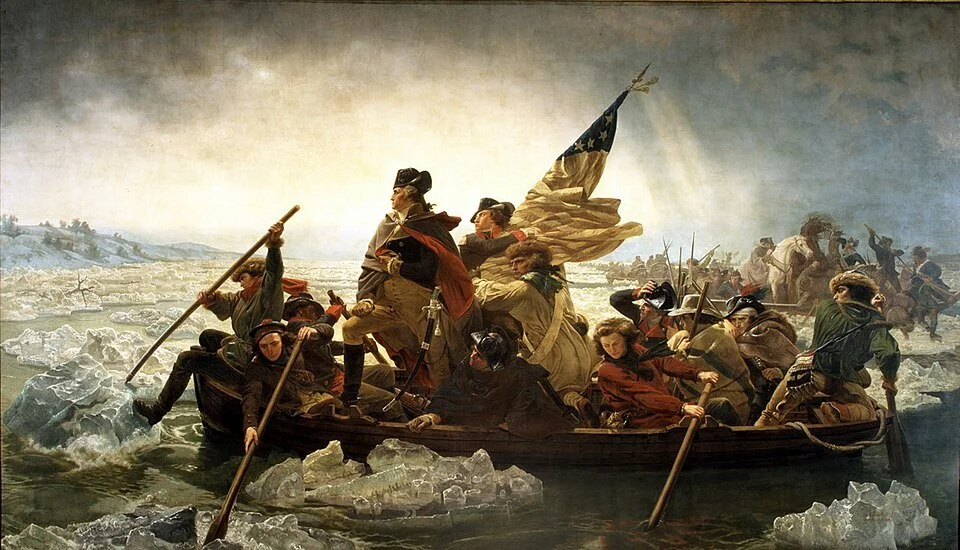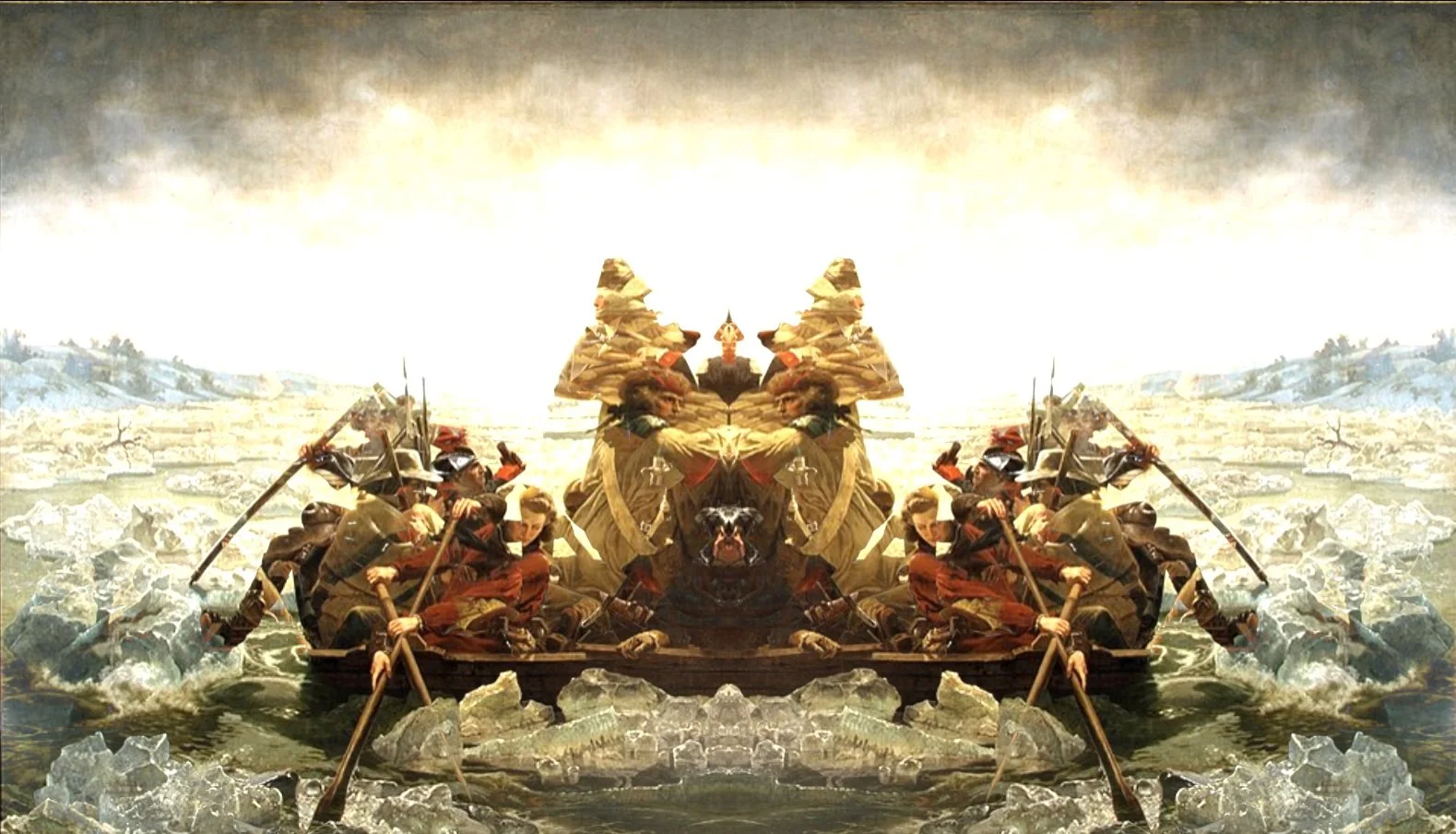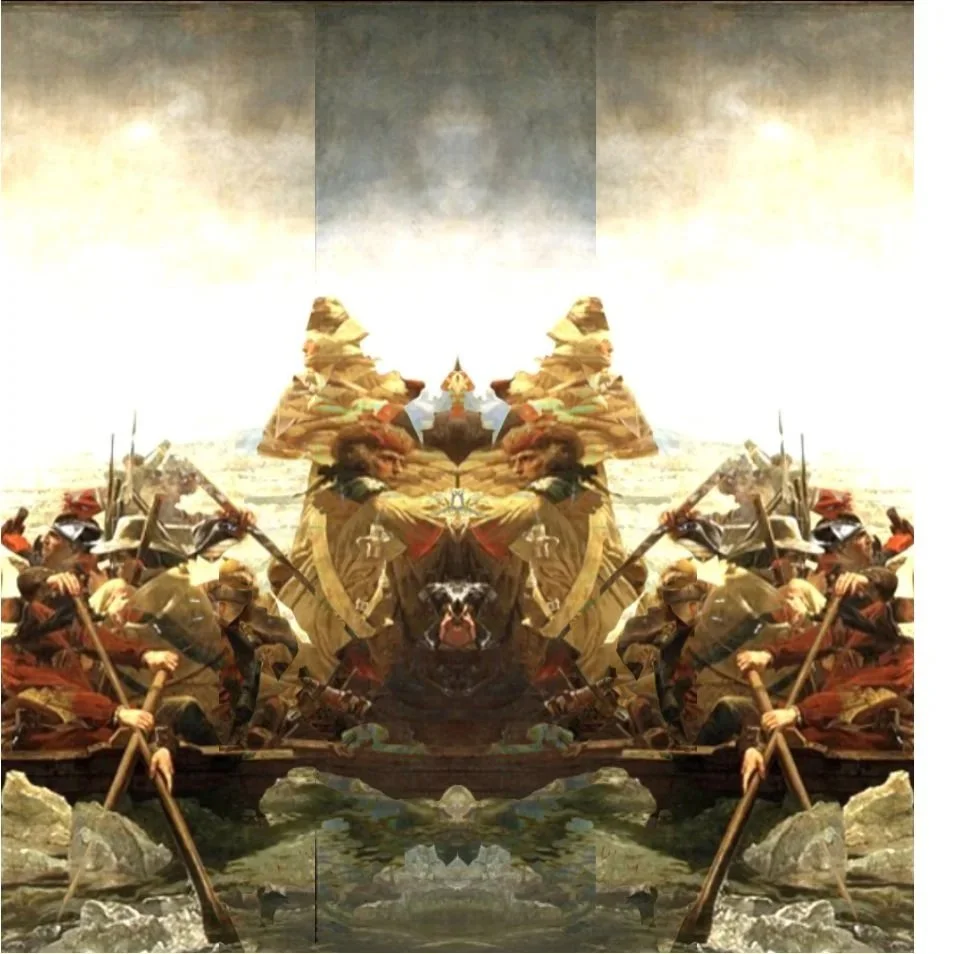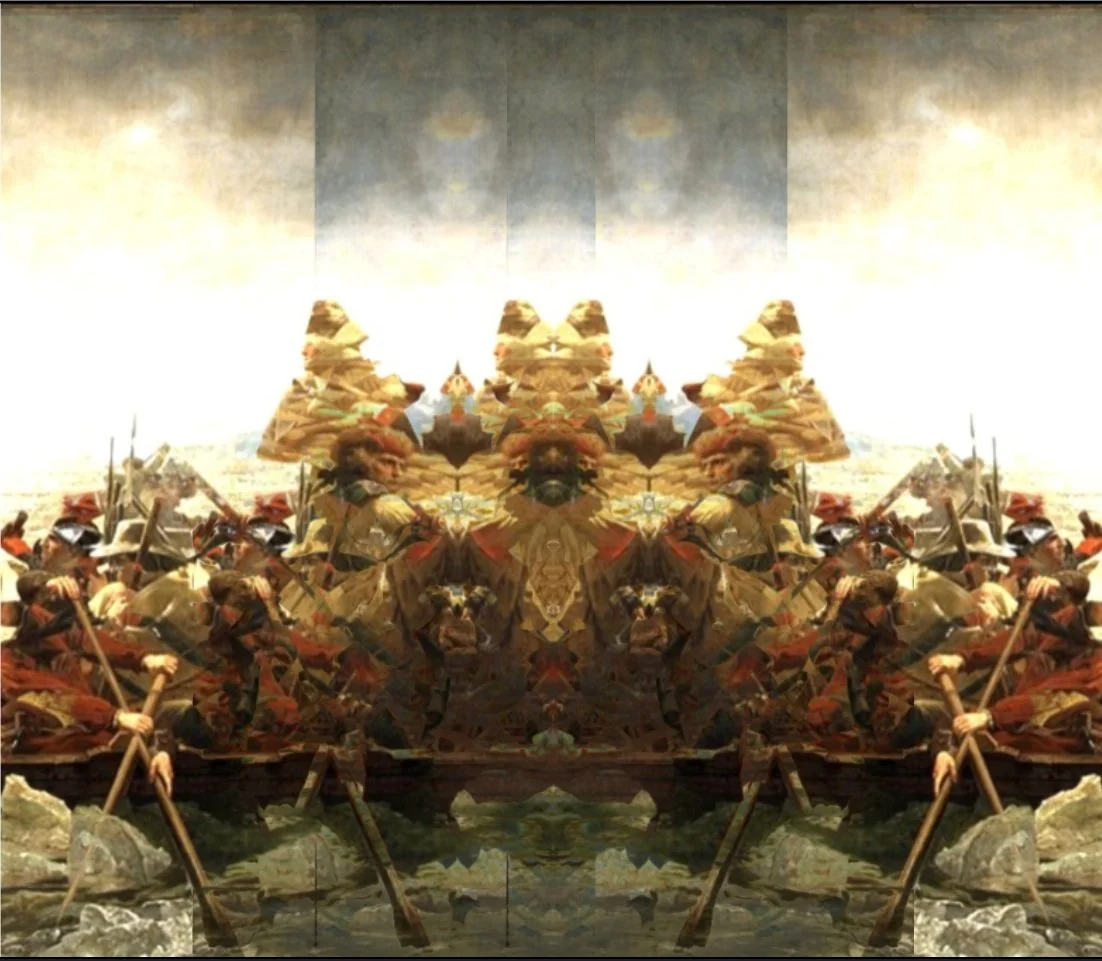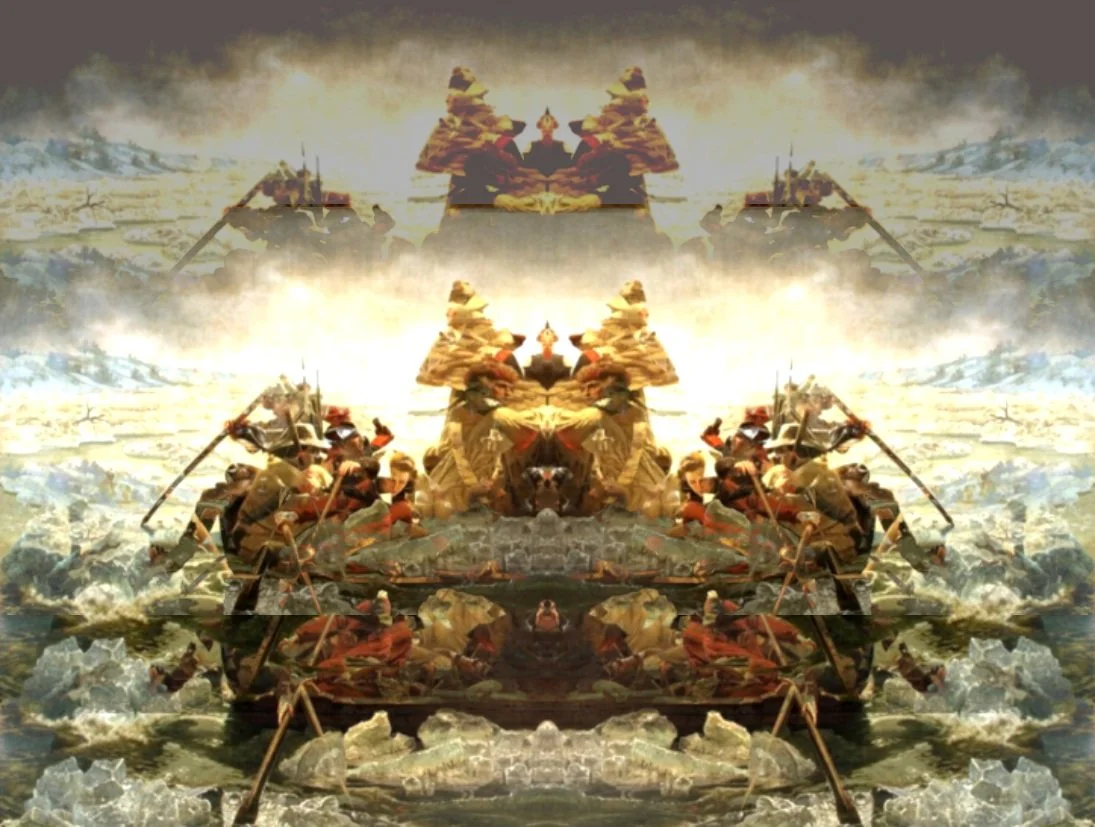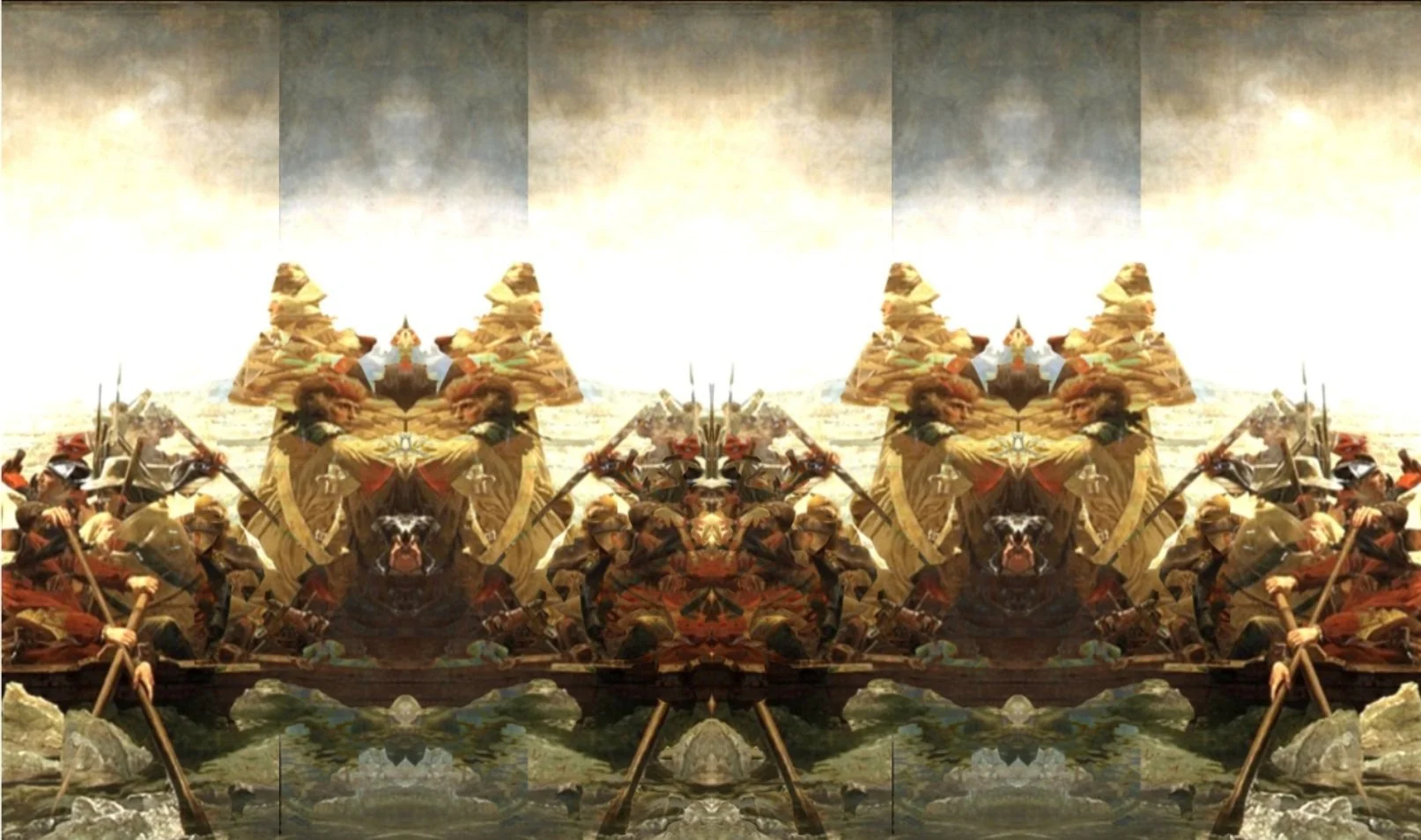Painting Analysis of Washington Crossing the Delaware, painted in 1859 by Emanuel Leutze, depicting the morning of December 26, 1776.
A Romanticized Depiction
There are allusions in the work that might not be historically accurate, but seem to fit in hindsight. In addition to strong Freemason symbology, there are two, main themes: 1.) fighting against Bulldog Ferguson, a British Soldier who might also have been Freemason; and 2.) colonial apothecary gardens. The story told in the painting appears to be about British and Hessian camps deliberately setting up in marshy wetlands of Trenton, where the Colonists wanted to plant apothecary gardens. Since Winter is the planting season, if the area couldn’t be cleared of the camps, there wouldn’t be a garden. Part of Washington’s motivation was to clear the area for the sake of the garden and a year of income - so much depended on the harvest, beyond military necessities, apothecary products played a significant role in the Colonial economy. Bulldog Ferguson might not have been at that battle, but he arrived so close to the event, it is possible that he was there.
The image is registered against itself and finds an illusion of a bulldog. A British Commander named Patrick “Bulldog” Ferguson might be the person to whom the bulldog illusion refers.
Registered into a Square
Overlapping the side “wings” of the image fills in gaps, reinforces other gaps. The wings appear to hold the breech mechanism. Before the bulldog is a pearl of water inside of what will build up to be the Archimedes Principle.
Prince Phillip
An African-American person appears in the center as an illusion. This could be Prince Phillip, a servant of George Washington, who would come with him to battle.
A Map in Perspective
Two registrations overlap in the center to show what appears to be a river-side camp or village. Does this represent the Hessian Camp?
A Dingy of Apothecary Product
The center forms an image of a dingy loaded with either raw harvest or processed apothecary product. The ghost of a red poppy graces the foreground, a second ghostly vision in the background shows the apothecary flowers growing in marshy wetland.
Calendar Layout
In this layout, we are shown a calendar where time ascends. The lowest level is Winter, followed by the successive seasons, identified by the progress of germination. The center is a cross section of a poppy head as it is planted, then germinates, then blooms, finishing as a totally open pod at the top, ready to be planted again.
